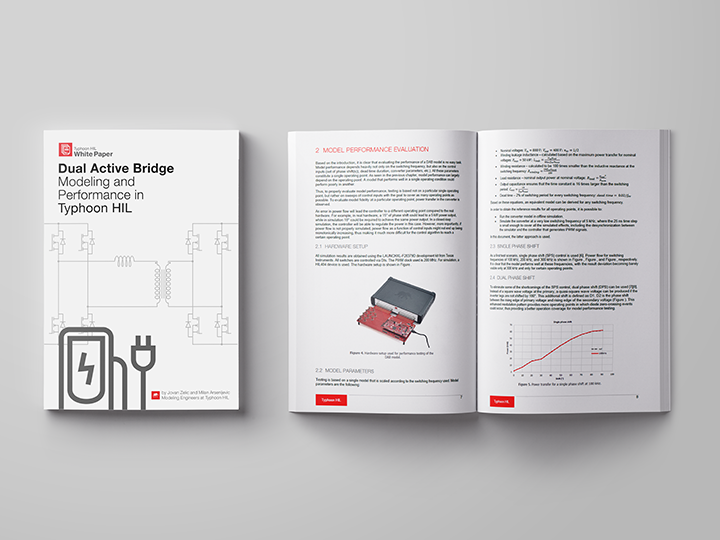Dual Active Bridge Modeling and Performance
Electric Vehicle (EV) battery chargers present an integral and growing part of transportation electrification. Hardware-in-the-Loop (HIL) testing of control software can provide well-known benefits when developing power electronics devices. Both On-Board Chargers (OBC) and DC Fast Chargers (DCFC) are 2-stage power electronics converters, comprised of an AC-DC converter at the grid-side input, and an isolated DC-DC converter that connects to the battery. When it comes to real-time simulation, the DC-DC converter is characterized by two very important aspects:
- Very high switching frequencies are typically used, in order to reduce the converter size and weight
- The fundamental harmonic of waveforms associated with the isolation transformer is equal to the switching frequency, as opposed to the grid-tied converter which performs power transfer at the grid mains frequency (50/60 Hz)
Therefore, it is the ability to simulate the DC-DC stage of the converter that presents the largest challenge for real-time simulation. In order to estimate the fidelity of the simulation, multiple parameters can be taken into consideration:
- Simulation time step
- Digital inputs sample rate
- Switch model type and additional algorithms that handle the switching behavior
Understanding all of the simulation parameters and algorithms can be difficult and time-consuming. Even with a thorough grasp of all the model’s aspects, the converter model may provide ultra-high fidelity at one operating point but yield unsatisfactory results elsewhere. Ultimately, the true measure of simulation fidelity lies in running the model in conjunction with a realistic external controller, known as controller Hardware-in-the-Loop (C-HIL).
This white paper presents a detailed and thorough explanation on how the Dual Active Bridge (DAB) converter is modeled in the Typhoon HIL toolchain. Simulation data is obtained using a real-time simulation with an externally connected controller. Detailed simulation results are provided in order to answer the ultimate question: What’s the highest switching frequency for simulating a DAB converter in real-time?
